I can’t take credit for this analogy, but I absolutely love it: hormones are like a symphony and circadian rhythms are the conductor.
The term circadian rhythm refers to the fact that a huge array of biological processes within the human body (and indeed all forms of life on Earth) cycle according to a 24-hour clock. Circadian rhythm allows your body to assign functions based on the time of day (and whether or not you are asleep); for example, prioritizing tissue repair while you are sleeping, and prioritizing the search for food, metabolism, and movement while you are awake. Circadian rhythms are how your body knows what time it is (like when it’s time to get up in the morning)–and properly regulated circadian rhythms are critical for health.
Your brain has a master clock, called the circadian clock, which is controlled by specialized cells in a region of the brain called the suprachiasmatic nucleus of the hypothalamus (typically abbreviated SCN–and how’s that for some awesome trivia!). This is the conductor. The circadian clock then controls the ebb and flow of certain hormones (cortisol and melatonin being especially important) which act as signals of the circadian clock throughout the body.
Save 80% Off the Foundations of Health
Expand your health knowledge on a wide range of topics relevant to you, from how to evaluate scientific studies, to therapeutic diet and lifestyle, to leaky gut and gut microbiome health, to sustainable weight loss, and much more!!!
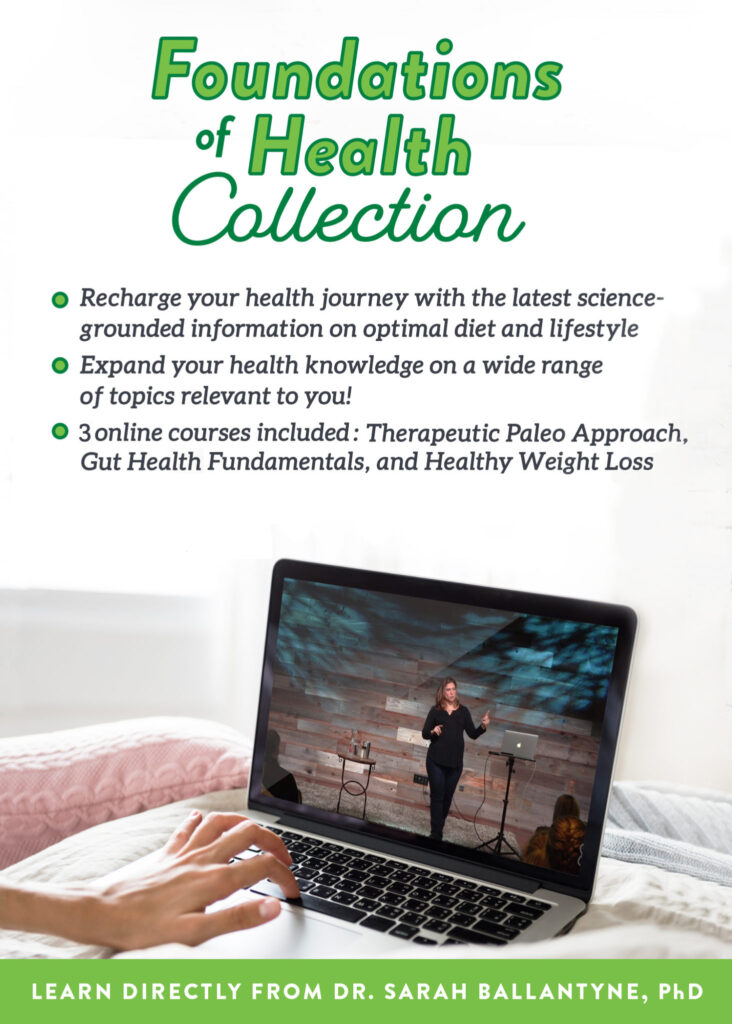
As the levels of cortisol and melatonin cycle throughout the day (cortisol peaking shortly after waking and melatonin peaking during the middle of the night), they tell all the cells in your body what “time” it is. The cells each then then set their own internal clocks to the brain’s clock (like setting your watch to Greenwich Mean Time).
The circadian clock is set by a variety of external factors, but most importantly light during the day and dark at night (also called the light-dark cycle). In order to have healthy circadian rhythms, your circadian clock needs to be set to the right time.
The vast majority of your hormones cycle during the day (not just melatonin and cortisol). Not only that, but sensitivity of different types of cells to different hormones can also cycle. This impacts every system in your body, from your immune system, to how well you digest your food, to how much insulin is released in response to sugar intake–all change based on the time of day. This is the symphony. And, this is why prioritizing circadian rhythms is so important: it not only helps regulate the levels of and sensitivity to different hormones, but even more importantly, it regulates the natural ups and downs that your hormones go through throughout the day and night. And this is necessary for health. When your circadian rhythms are properly regulated, you sleep well, you have energy in the mornings, your energy is constant throughout the day until it starts to gradually diminish in the evening… and it reduces your risk of chronic disease! Yes, ALL chronic disease!
What can you do to set your circadian clock, protect your circadian rhythms and therefore regulate so many important hormones?
1. Get Bright (Blue) Light Exposure During The Day:
The light-dark cycle mentioned above is the most important signal to your circadian clock. This means that one of the best ways to set your circadian clock is be exposed to bright (ideally sunlight) during the day, but be in the dark at night. In fact, sunlight exposure during the day is probably the single most important thing you can so to support the normal production of melatonin in the evening.
The component of sunlight that tells your circadian clock that it’s daytime now is blue light. You have photoreceptors in your eyes and your skin that are sensitive to blue light (the receptors in your eyes are much more sensitive than in your skin) which then convey the signal to the brain. How much time outside is enough? If it’s a sunny day, as little as 15 minutes (without sunglasses!). If it’s cloudy, 30 minutes to an hour is better. And of course, the more the better.
So, what do you do if you’re a shift worker or live in a climate or have other barriers to being outside? There’s a great biohack available for getting this blue/sun light exposure during the day: a light therapy box. There doesn’t seem to be a difference between the white light boxes and the blue light boxes in terms of supporting melatonin production, so you can pick the least expensive option–but choose one that is bright, at least 10000 lux. Use it for at least 15 minutes at roughly the same time every morning or mid-day. Another option is to make many small changes to brighten your environment during the day: use sunlight spectrum light bulbs in your house (but you’ll want to avoid using these light bulbs in the evening), keep curtains open during the day, make sure your computer monitor and other screens are set to its brightest setting, drive with the windows down… All of these things help, but still aren’t typically as bright as a light therapy box or just being outside, even on a cloudy day.
2. Avoid Bright (and Blue) Light in The Evening
Just as it’s important for your body to get the signal that it’s daytime during the day (or your day, if you’re a shift worker and using a light therapy box), it’s important to tell your body it’s nighttime once the sun goes down. This means avoiding blue light and sticking with red and yellow wavelengths of light as well as keeping the overall light level much dimmer.
You can achieve this important “darkness signal” to your circadian clock by keeping your indoor lighting as dim as possible in the evenings with dimmer switches, or just plain ol’ turning on fewer lights, in conjunction with investing in red or yellow lightbulbs for whatever lamps will be used in the evening. If you plan to use a computer monitor or watch TV, there are two options. The first is to install f.lux on your computer (it’s trickier to install on phones and tablets) and now set the screen brightness to the lowest setting. The second, and probably the best biohack for supporting evening melatonin production (more technically called dim-light melatonin production) is to wear amber-tinted glasses for the last 2-3 hours of your day. In fact, several scientific studies show that wearing amber-tinted glasses in the evening improves sleep quality and supports melatonin production. What are amber tinted glasses? Quite simple: glasses with yellow lenses. These could be driving glasses, glaucoma glasses, or safety glasses (my personal preference in for the large lens of safety glasses because they also block peripheral light and there are options that can fit well over regular glasses… plus they’re super cheap!). Amber-tinted glasses are also a great option for shift-workers.
A more sophisticated option for getting both your bright blue light in the day and your dim red light in the evening is programmable light bulbs where you can set the color spectrum and the brightness for the time of day (and you can program them to automatically change at whatever time you want! how cool is that!). It’s an investment, but then you can ditch the goofy safety glasses (although, you’ll want to pull them out again if you’re going to watch TV).
3. Reduce and Manage Stress
You probably recognize cortisol as being the master stress hormone. It’s also a very important circadian rhythm hormone. This means that if you’re under stress, not only do you have all the effects of elevated and dysregulated cortisol to deal with, but you also disrupt your circadian rhythms.
Reducing stress means to remove stressors from your life. Whether that’s saying “no”, asking for help, or making changes to the structure of your life, whatever you can do to reduce stress will make a difference. Oh, and coffee increases your body’s stress response to psychological stressors, so you might want to reduce coffee or give it up altogether.
Managing stress means increasing activities that help regulate cortisol and make you more resilient to stressors. This might include taking up meditation, yoga, going for a walk at lunch, taking a bath, or just making time for a good laugh or a hobby in your life.
4. Go To Bed On Time! (and get enough sleep!)
Just like being stressed can affect circadian rhythms, so can ignoring them. Your melatonin starts increasing about two hours before bed to prepare your body for sleep. If you’re muscling through that with a sugary snack, a scary movie, or whatever else you do to keep yourself awake at night, you are affecting your circadian rhythms.
Aim for 7-10 hours of sleep every night (and most people will need between 8 and 9). This means shifting your bedtime earlier so you aren’t muscling through that fatigue to get a second wind (which by the way, usually also means you’re increasing your cortisol right when it’s supposed to be at its lowest). For more on sleep and the immune system, see this post.
5. Sleep in a Cool Completely Dark Room (and keep your indoor temperature warmer during the day).
Sleeping in a completely dark room is really important for protecting circadian rhythms. Cover up any LED lights on phones, toothbrushes, baby monitors, or whatever other gadgets you have plugged in in your room (masking tape works great for alarm clocks and duct tape works great for little LED lights). And ditch the nightlights or switch to ones with red light bulbs. Blackout curtains can be one of the greatest biohacks for getting a good night sleep as can white noise generators (especially if there are high frequency/pitch noises in or outside of your home since these are very stimulating for the brain).
While you’re at it, ditch the alarm clock. Waking up to a jarring noise is very stressful. If you don’t have the luxury of sleeping until your body naturally wants to wake every morning (which is the best option for protecting your circadian rhythms and overall health), a light alarm is a great investment.
The temperature that you’re sleeping in is also a cue to your circadian clock. Ideally your indoor temperature at night should be 65F or lower. And actually, the converse is true: being warmer during the day supports circadian rhythms, typically above 75F.
6. Get Activity
Getting some kind of activity during the day has been shown in clinical trials to support melatonin production. There are a few exceptions though. For example, intense activity later in the day can delay your melatonin production (basically keep you revved up longer in the evening) unless it’s routine (say, you always go to CrossFit in the evening and your body has adjusted). And working out in a really bright environment in the evening can be a problem (the combination of bright lights, maybe in your gym, and activity in the evening suppresses melatonin). But, other than that, any kind of activity any time of day (even better if it’s outside!) will help support circadian rhythms.
7. Keep your Blood Sugar Levels Well Managed
Many hormones are sensitive to swings in blood sugar, including both melatonin and cortisol. This doesn’t mean eating low-carb (actually too low carb can disrupt circadian rhythms by increasing cortisol and affecting insulin sensitivity, plus high starch meals about 5 hours before bedtime have been shown to improve sleep quality), but rather to avoid spikes in blood sugar from high glycemic load foods. If you’re following a Paleo diet, chances are really good you’re doing this already.
8. Be Social During The Day and Intimate At Night
This is something I learned from Dr. Paul Jaminet. Social connection can influence your circadian clock. Dr. Jaminet recommends limiting big social gatherings (and even things like watching TV shows that have lots of characters) to the daytime, and keep things intimate (just your family and closest loved-ones) in the evening.
9. Eat Organ Meat and Seafood
Melatonin is made from serotonin which is made from tryptophan. Organ meat and seafood have more tryptophan while also having less of the other amino acids which compete with tryptophan to cross the blood-brain barrier. So, eating more organ meat and seafood is a great way to boost production both of serotonin and melatonin.
Eating seafood also contributes long-chain omega-3 fats to your diet (DHA and EPA). These help support circadian rhythms by improving neural health in the brain and by improving resilience to stressors (if you’re getting high dietary omega-3s, you secrete less cortisol in response to stress).
10. Embrace Seasonal Variation
It is natural, normal and healthy to sleep more in the winter and less in the summer. But indoor lighting has robbed us of the natural seasonal variations in the amount of sleep we get, our activity levels, even our appetites. Most of us live as though it’s summer year-round. But, you can embrace seasonal variation using all of the biohacks mentioned in this post by adjusting things like bedtime (what time you dim the lights and put on your amber-tinted glasses) by the time of year. Maybe aim for 9 or 10 hours of sleep in the winter, but only 7 or 8 in the summer. Adjust your indoor temperatures to more accurately reflect what’s happening outside (this is also a great way to save on heating and cooling bills). Eat seasonally (which means your carbohydrate intake will likely vary by season too, which will influence cortisol and melatonin through effects on insulin). All of these things will help regulate your hormones in a healthy way… and you will feel the difference!
Want more details? Check out Chapters 4 and 7 in The Paleo Approach.

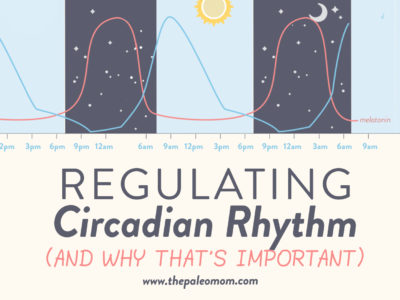
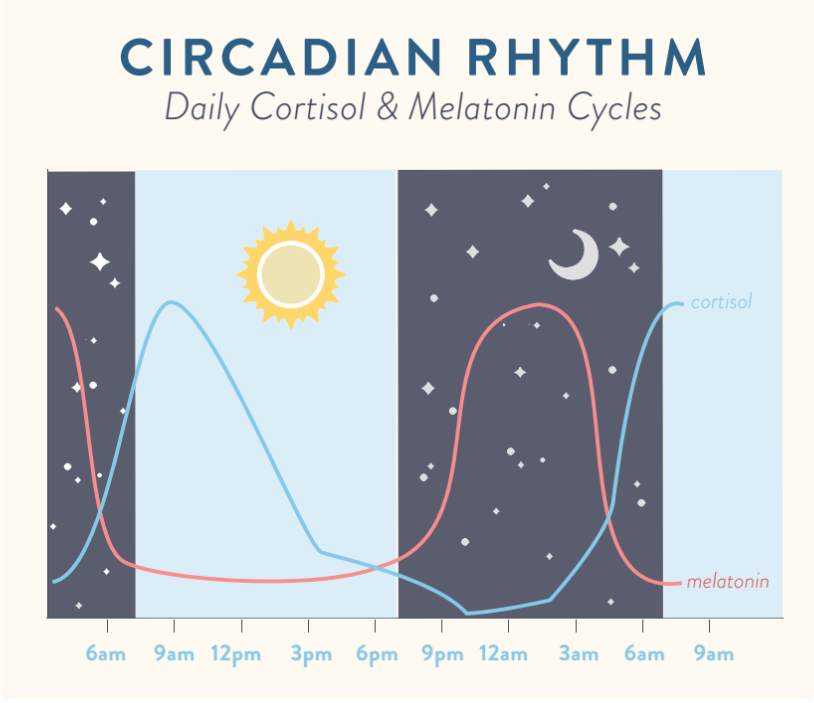
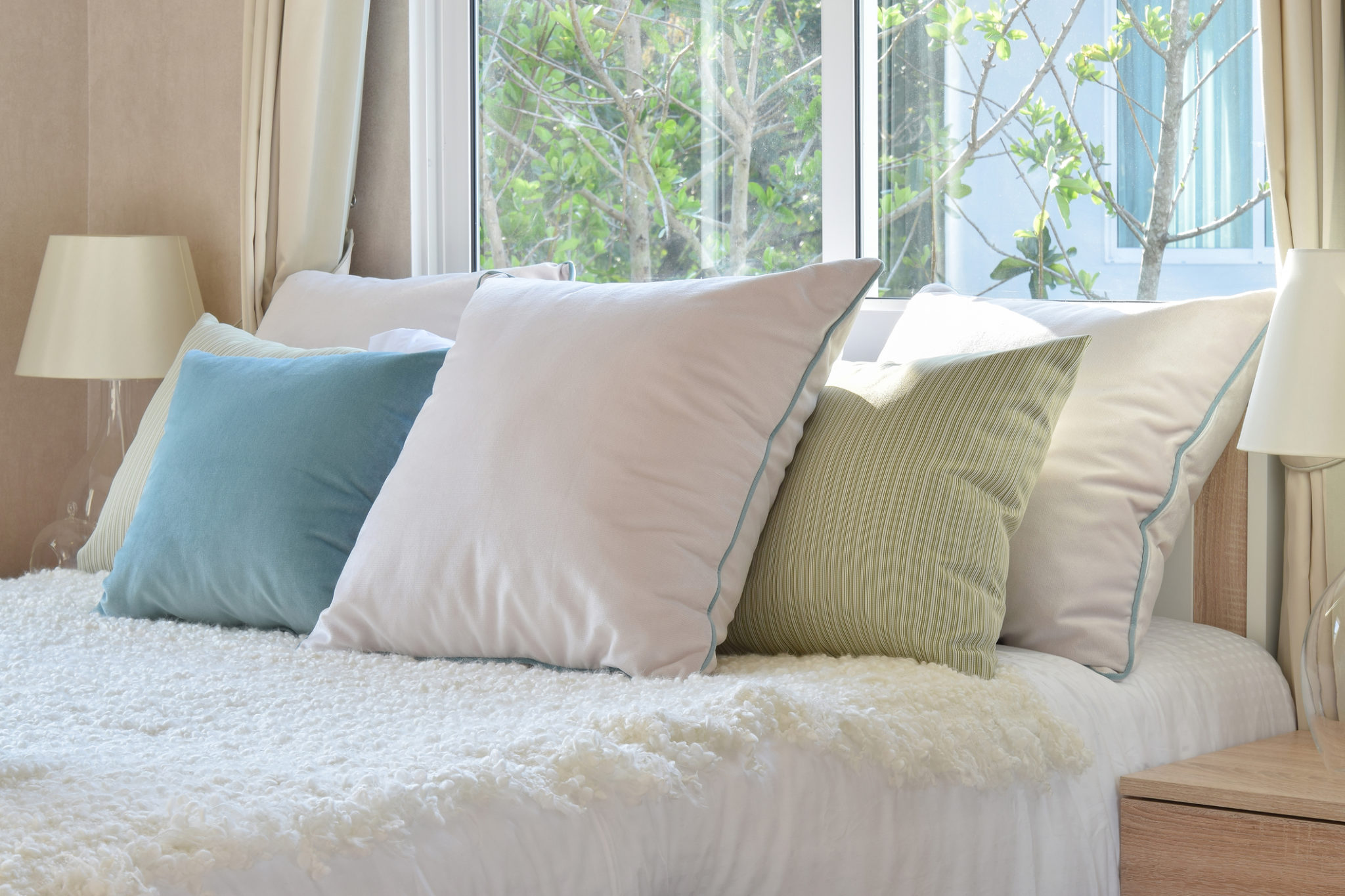
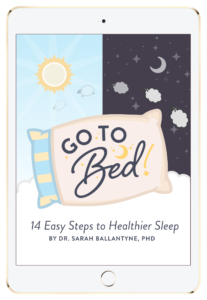
 Book Review: The Ancestral Table by Russ Crandall
Book Review: The Ancestral Table by Russ Crandall